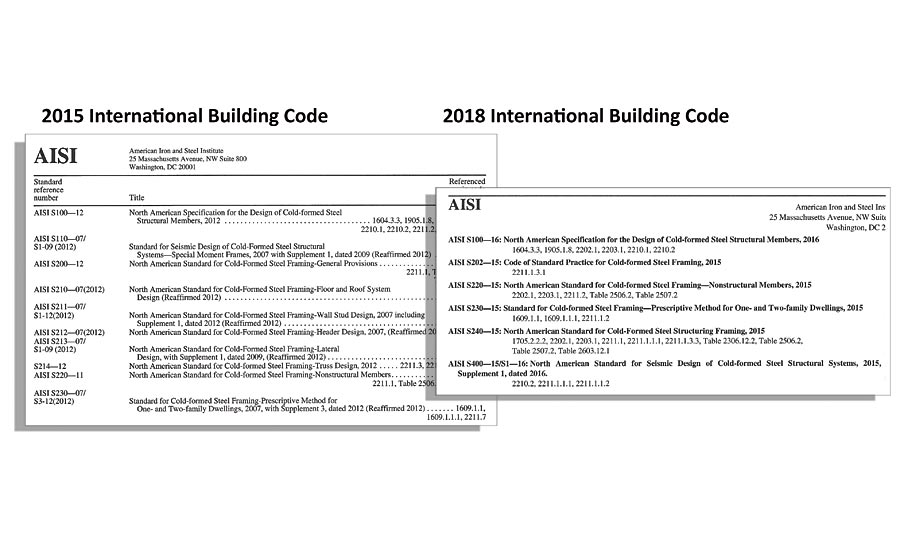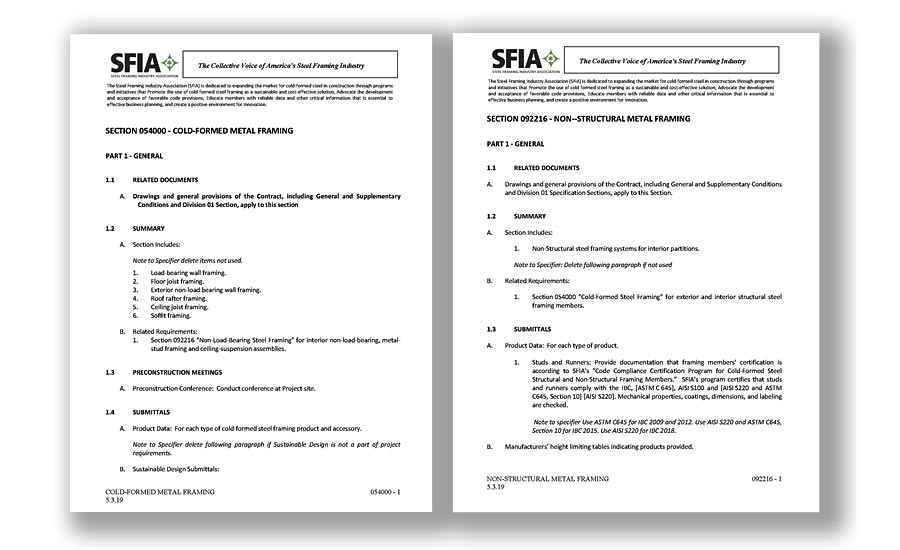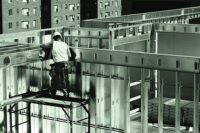As the data requirements on construction projects become more complex it’s crucial that everyone in the value chain operates with the same set of project requirements. These are defined by the project specification documents which serve as the field guide for the wall and ceiling subcontractor by identifying the materials, installation methods, and level of quality needed to complete the project. Specifications that are clear, accurate, and detailed will go a long way toward cutting time spent on requests for clarification, fewer change orders, and help avoid cost overruns.
Unfortunately, we find that many architectural specifications are out of date and contain inaccuracies that can add up to big direct and indirect costs. This is especially true for cold-formed steel framing specifications, primarily due to evolving American Iron and Steel Institute standards and how the latest model building code references those standards.
In this column, I’ll share some important changes to the 2018 International Building Code and AISI standards that you need to be aware of. In a future column, I’ll discuss the importance of Quality Assurance/Quality Control, which is part of the latest AISI standards. Finally, in a third column, I’ll address some best practices that we’ve collected from our work with contractors. Together, we want to provide you with the information you need to review project specifications against the current building codes and effectively work with the specification writer to reduce risk and promote the project success.

AISI has consolidated framing standards into a single document, AISI S240. Contractors should be aware that references to the earlier standards for projects that comply with the 2018 IBC will cause confusion and a disconnect at some point
A Transition to AISI Standards
When reviewing a specification, it’s critical that contractors start by checking to see which version of the IBC has been adopted by the jurisdiction where the project is located.
In the 2015 IBC and earlier editions, ASTM C645 was referenced to define the nonstructural product, and ASTM C745 defined the installation. For structural applications, the standard was ASTM C955. In the 2018 IBC, however, there is no reference to the ASTM documents. Instead, AISI S220 is referenced for nonstructural applications and AISI S240 for structural products.
There is also a significant impact on this transition to AISI in Chapter 25 of the IBC (Gypsum Board, Gypsum Panel Products and Plaster). The 2015 IBC states in Table 2507.2 that structural CFS framing must comply with both AISI S200 and ASTM C955, and nonstructural framing must comply with S220 and ASTM C645. According to Table 2508.1, installation must comply with ASTM C754 or C1007. However, in the 2018 IBC, Table 2506.2 states that structural framing must conform with AISI S240 and nonstructural framing is required to conform to AISI S220. No mention of ASTM.
This transition to AISI standards creates the potential for confusion during both the bidding and submittal process if the construction documents call for compliance to one set of standards and the local building codes reference the other.
Design Requirements
The contractor also needs to be aware that ASTM standards do not address design but AISI does, meaning that while ASTM requires engineering calculations it does not specify that these be provided by a registered design professional. This can result in significant problems if the building official cites the AISI reference in 2018 IBC to require oversight by a design professional, but only ASTM is referenced in the specification. In a worst-case scenario, the building might need to be re-engineered or material that has already been installed may need to be replaced.
AISI Standards Reorganized
A total of 11 AISI standards documents are referenced in the 2015 IBC with six separate standards to cover the design of specific structural elements, including wall systems, floor and roof systems, lateral load resisting systems, as well as truss and header assemblies. Since the 2015 IBC was published, these six standards have been consolidated by AISI into a single comprehensive standard, North American Standard for Cold-Formed Steel Structural Framing, AISI S240, and is the document referenced in the 2018 IBC. Overall, the AISI S240 standard improves understanding, but contractors should be aware that references to the earlier standards for projects that comply with the 2018 IBC will cause confusion and a disconnect at some point.

The free SFIA Guide Specifications give contractors a handy tool for identifying out of date requirements,
references, and requirements in the project documents.
Speak Up or Else ...
It’s in the best interest of the contractor to understand prior to bid how the architectural specification reads, what standards are referenced and which building code the project falls under. If there is a discrepancy in the standards, it’s advisable that the contractor alert the architect, explain the nuances in the discrepancy, and document all activities.
There are tools available to contractors to help identify and remedy issues in a specification, including the industry standard guide specifications that the Steel Framing Industry Association has developed and maintains. These documents follow the Masterformat and cover structural and nonstructural CFS framing, sections 054000 and 092216, respectively. Both are available as a free download from the Resources section of the SFIA website CFSteel.org. Contractors can refer to these documents during their internal review. Architects can use them to update their house specifications as needed, or they can adopted them in their entirety.
Because the specification is a foundation document of the project, it’s important to get this right. If there is a disconnect, such as an ASTM standard specified by the architect where the building code requires an AISI standard, it opens the door to interpretation, confusion, delays and exposure to liability.






Report Abusive Comment